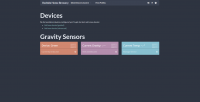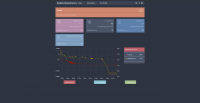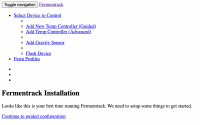Hi everyone, been having a little trouble with my account which I hope is now fixed!
I've just moved my Fermentrack installation to a different router and having some issues... My first step was to remove the network settings from the controller, then changed the Pi network, powered up the controller and connected to the "new" network. Reconfigured my iSpindle and all looked good. However, Fermentrack doesn't see the controller on the new network, this is what the debug connection output says:
...
Connection Settings
| Connection Type | wifi |
| WiFi Hostname | esp7213274.local |
| WiFi Port | 23 |
| Last Cached IP Address (from Hostname) | 192.168.1.158 |
Tests Performed
| Test | Parameter | Pass/Fail | Output |
|---|
| Device Status Test | active | Passed | Device active & managed by Circus |
| DNS Lookup Test | esp7213274.local | Passed | 192.168.2.124 |
| Connection Test | esp7213274.local | Passed | Connected |
| Controller Response Test | esp7213274.local | Passed | b'N:{"v":"0.2.4","n":0,"c":"00000000","s":0,"y":0,"b":"e","l":"3"}' |
| Cached IP Test | 192.168.1.158 | Passed | Available |
| Connection Test | 192.168.1.158 | Failed | Unable to connect |
...
The Last Cached IP Address is the "old" IP address and the DNS Lookup Test is the "new" IP address. Is there a way I can force Fermentrack/Pi to flush or update the cache? Is it as easy as that?
From the Pi I can ping both the "new" IP address and Hostname successfully, but that's about the limit of my knowledge on things Pi.
Chris



















![Craft A Brew - Safale BE-256 Yeast - Fermentis - Belgian Ale Dry Yeast - For Belgian & Strong Ales - Ingredients for Home Brewing - Beer Making Supplies - [3 Pack]](https://m.media-amazon.com/images/I/51bcKEwQmWL._SL500_.jpg)













































